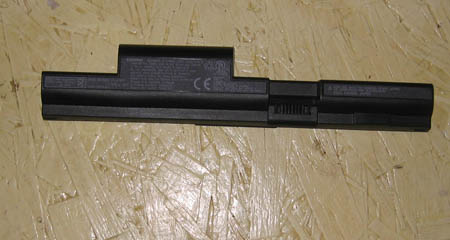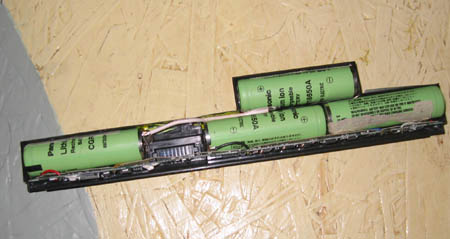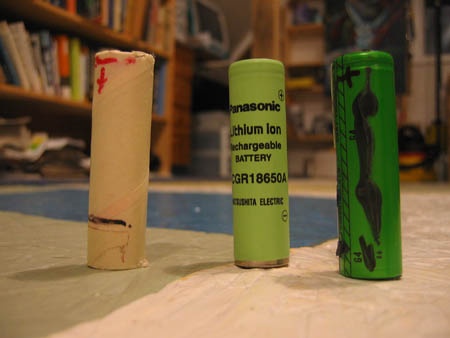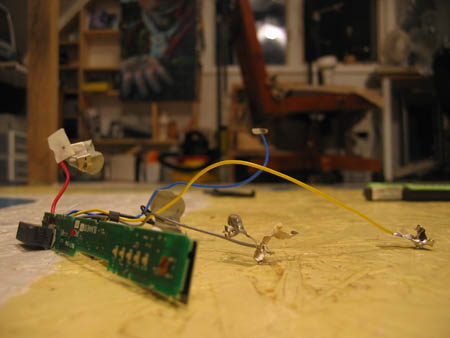|
|
|
many laptop parts are generic
Tuesday, September 4 2007
[REDACTED]
I generally think of laptop computers as being full of nonstandard parts that vary enormously with manufacturer and model. To some extent this is definitely true. For example, the connectors carrying the signals to the LCDs can come in all different shapes, sizes, genders, and styles (though it's still possible that the actual electrical characteristics of those signals is similar or even identical across many makes and models). But I've known for awhile that the pinout specs of laptop hard drives are essentially the same across all models and that differences of shape and connector type are always handled by custom "sleds" having integrated signal adapters. The other day, though, I was amazed to discover this was mostly true of laptop CD-ROM/DVD drives as well! I had a stack of them from a wide range of junked laptops, and when I went looking for one I could use to replace the busted DVD drive in the Tecra 9000, I found that it was simply a matter of attaching a special signal adapter and a plastic sled. The standardization of this part makes sense, of course, given the brutal economics of commodity laptop production. But the fact that media drives can be swapped between just about all laptops, no matter the manufacturer, is an extreme example of this. It's as if you could pull the radiator out of your Chevy and drop it into your Honda Accord.
Another recently-discovered component that I've found can be freely swapped between laptops is one that makes up the bulk of their battery packs. While the packs themselves vary enormously in size, shape, and connector type, inside these boxes (at least the ones I've looked inside) the lithium ion cells are all essentially the same. They are all cylinders precisely 2.5 inches long, 11/16 inches wide, and they all nominally produce 3.6 volts. Inside the packs, the cells are usually stacked into batteries four cells high (producing 14.4 volts), although often the batteries are ganged together in parallel to produce more amp hours at the nominal voltage. Some packs have two sets of batteries in parallel (I saw this in a Dell pack) while others have three sets in parallel (I saw that in a Gateway). In my little Evo N410c the batteries weren't paralleled at all, producing a third or half the amp hours of those other packs. Along with the cells, there is a small electronic board inside the pack responsible for handling the details of the charging and discharging of the battery, and this involves monitoring the voltage across every cell in the pack, not just the pack as a whole. But in packs where the cells are placed together in parallel, the controller boards do not bother with tracking every cell individually, just each 3.6 volt unit, however many cells comprise it.
I gutted the shell of my worst-performing Evo N410c battery pack, removing its old, dead cells, and then I use acrylic paint to color-code the places where the positive and negative ends of each cell go. Next I plopped in four replacement cells from the Gateway battery pack, being careful to slip the appropriate metal-tab-equipped wire between each cell and at the ends of the pack. Unfortunately, though, these Gateway cells were probably six years old and couldn't hold a charge. Still, it seems to me that the cheapest way to replace a battery pack is to do just what I described, but with fresh new commodity cells, which can be found cheaply online.
At some point today I made a frame allowing me to dry sliced tomatoes in the sun. It consisted of a shallow wooden box the inside of which I spray painted black. Once I'd loaded it with tomatoes, I covered it with a pane of glass I'd removed from a defunct image scanner. I drilled a couple holes to encourage air flow, but out in the sun the inside of the glass quickly fogged up with re-condensing tomato water. Still, I had to cover the tomatoes with something or else they'd end up covered anyway — with fruit flies.

The outside of an Evo N410c battery pack. This thing looks a lot like a part of a handgun and by itself would probably never make it on an airplane (if my experience with the cognitive power of the typical American airport security worker is any guide).

Inside the battery pack, with some replacement cells. Unlike most laptop battery packs (which must be sawed apart irreparably), the housing on the Evo N410c snaps apart and goes back together easily.

Three different makes of 3.6 volt lithium ion cells. They are seemingly interchangeable. Note that I have clearly marked the polarity of two of them.

A laptop's integrated battery controller circuit, with wires to charge, discharge, and track voltages in 3.6 volt units.
For linking purposes this article's URL is:
http://asecular.com/blog.php?070904 feedback
previous | next |



